GASP!
Now a days, the CCG scene is rather clean cut - Magic dominates everything, with a few games here and there still printed for adults (L5R/WoW is all I've actually seen lately) and stuff like Pokemon and Yugio are cornering the markets for the kiddies.
Things are very different from when I was a kid. There were always new CCGs to try out and there were dozens already in production if you weren't into trying new things (who could afford it?)
I played most of the games that came out at the time, even if only a starter deck. One game I got really into, was RAGE.
RAGE is based on the Werewolf RPG by White Wolf Publishing (also played that) and its actually a very faithful adaptation of the highly successful PnP. The cards were stunning - check out this little number -
"Got your nose!"
Did I mention it was ULTRA VIOLENT!?
It is important to note that there was a major reprinting/re-imagining of the game when Five Rings Publishing bought the rights to it. That game was more sound rules wise, but much slower and had a ton of side rules that were difficult to remember/implement. The worst part - NONE of the original RAGE cards were cross compatible, despite having the same card back and basic mechanics. For the purposes of ths article, I am going to focus only on the original game (1995) and its five sets.
The cards in the game were divided into three rough categories - First, your Garou (Werewolves,) which were double-sided Character cards that flipped from the Human/Wolf form into Crinos (Big Bad Werewolf Mode) once they took enough damage.
There was also Sept cards, or your basic deck of equipment, actions, allies, etc, and the Combat cards, which were all violent acts to perform on your opponents. There were a few defensive maneuvers sprinkled in, but who wants to talk about the Fetal Position?
Play dead.
To begin with, each player chooses a group of Garou to act as a 'pack.' Each of the Character cards had a collection of different statistics - the most important of which, for now, is their Reknown Level (RL), which is located in the upper right corner. This number corresponds to the preset Renown Level of the game, which is usually 30 to begin with, but after the better Garu/decks are available, 20 seems like the best amount.
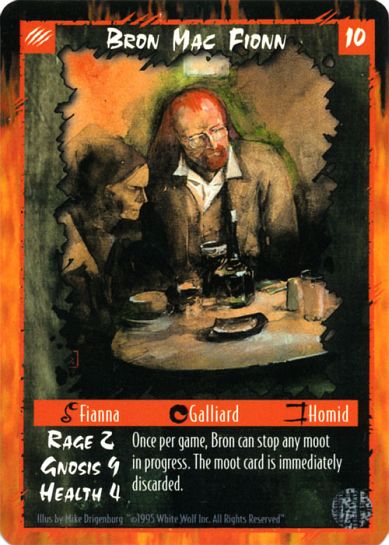
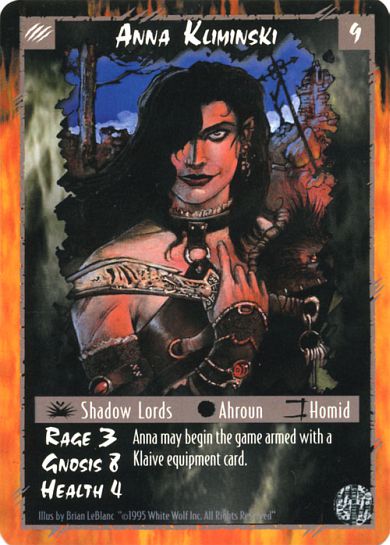
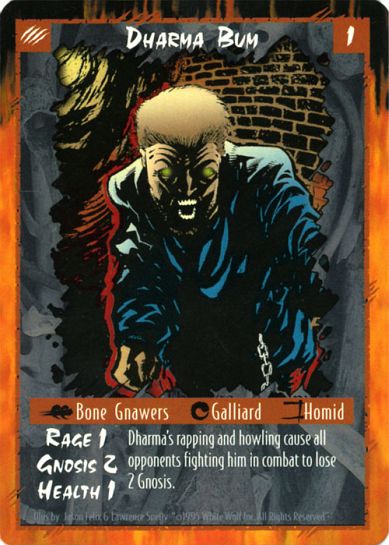
A typical 20 Renown Level Pack.
10 is pretty much the highest level on a single Character - all the best Garou have 10 Renown - though the ultimate character, King Albrecht, was 13. A 20 RL pack of Albrecht and a 7 Renown guy was pretty common back in the day.
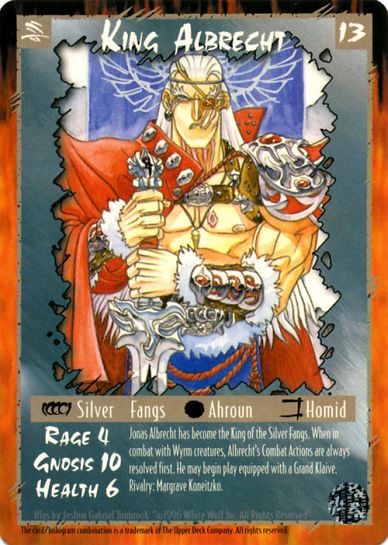
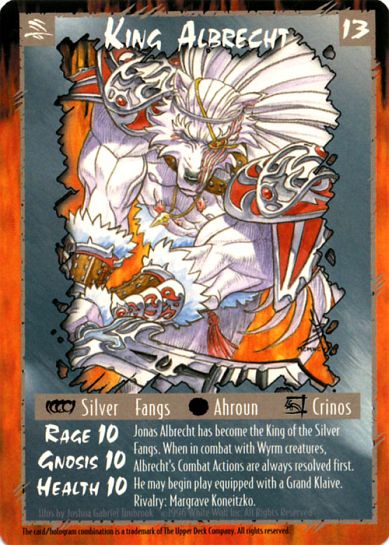
Timmy, Power Gamer's Favorite Werewolf.
The Renown Level of a game also determines how fast the game ends, so 20 RL was great for quicker games. More on that later.
Once the initial pack was chosen, a player would construct the Sept deck, which had to be at least 30 cards with no more than 3 copies of each card. In here would go cards like Equipment, Allies/Victims/Enemies, Gifts, Totems, Events, and Battlefields. The specifics aren't terribly important, but for the most part these cards are very similar to one or more of the mechanics in Magic.
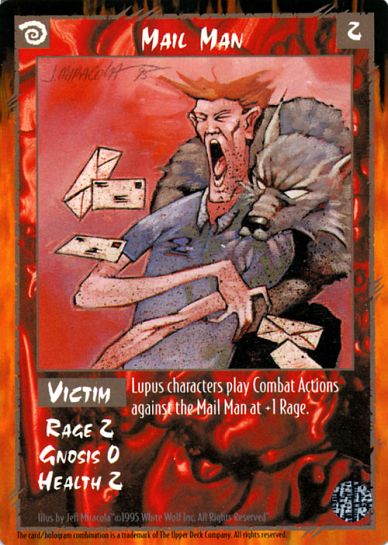
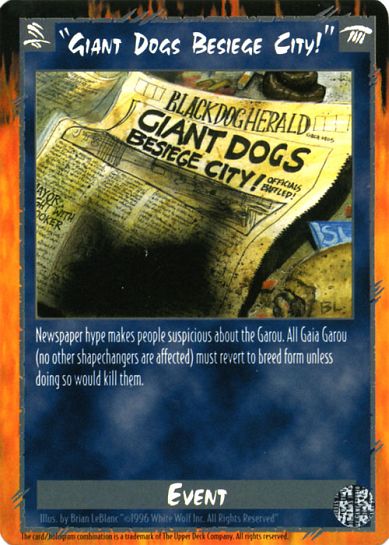
Different Sept cards.
After the Sept deck is constructed, the Combat deck is up next. The Combat deck only needs 20 cards with no more than 2 of each card. The Combat cards are much more straight-forward than the Sept - there are just cards for killing or avoiding said fate.
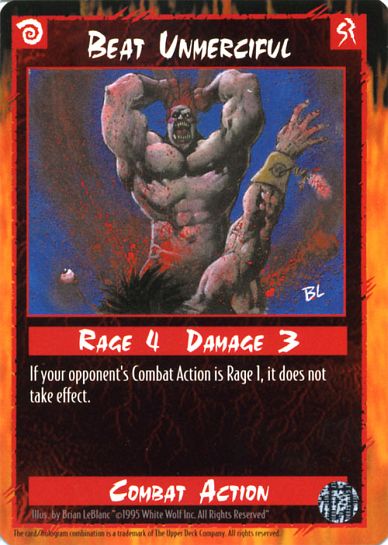
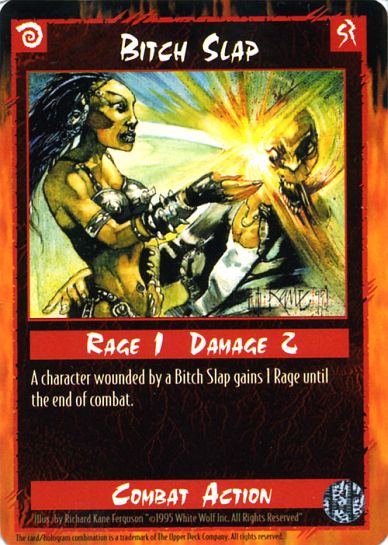
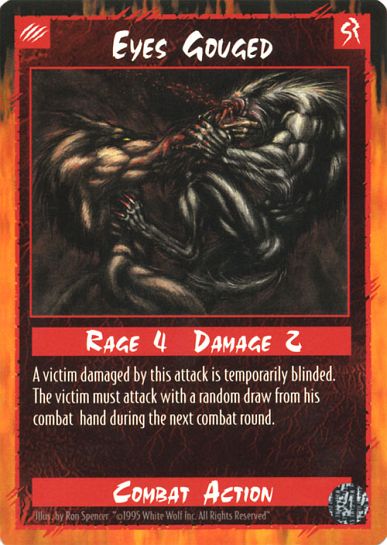
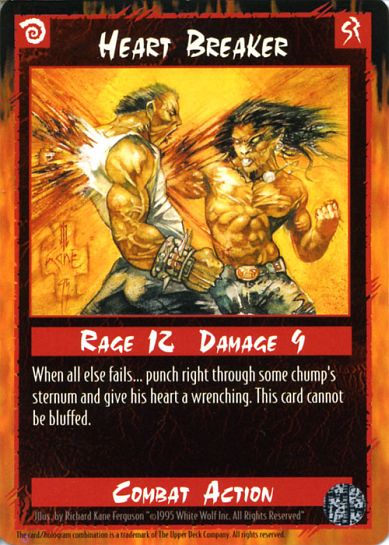
A collection of bad ass Combat Actions.
Now that decks are constructed, you'd draw up 5 cards of each deck (thought Combat won't be immediately useful) and EVERYONE begins to play the Sept phase.
That's right, there are no turns to bog play down. Everyone plays their Sept cards from their hands at the same time. This led to numeroud timinig confusions, which always led to heated arguments, but that was the state of CCG-dom at the time. The Sept phase is when the 'Gnosis' stat on the character cards came into play - much of the Sept cards have a Gnosis requirement to either play, use or attach the card.
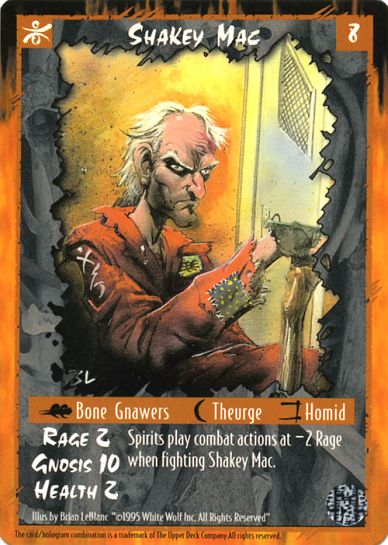
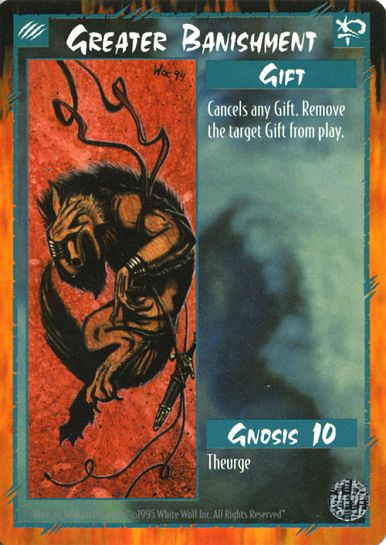
Shakey Mac is one of the few Garou who can use this high Gnosis Gift.
Sidenote: Historically, Gnosis is an ancient term referring to secret or hidden wisdom in a relgious sense - words like Agnostic still bare a form of the word.
Jesus has a high Gnosis stat.
So, once all the cards have resolved in the Sept Phase, (I use a Magic term here since there were no such conveniences in the RAGE rulebooks,) the players put down their Sept hands and pick up there Combat hands.
To begin the Combat phase, each player chooses their Alpha, or basically the Character who will be representing in the fights. Each player takes turns activating their Alpha on the basis of the highest Renown, in the case of a tie it is supposed to be randomized. Again, since all the best Characters are 10 Renown, it ended up being a lot of Rock-Paper-Scissors, which was the best way to randomize in the game (we had dice but they were not always convenient to use if we were playing on a carpet or outside.)
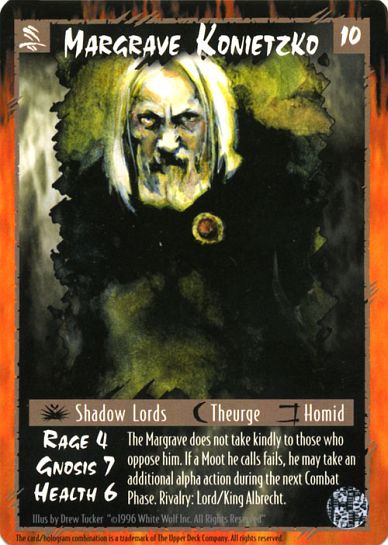
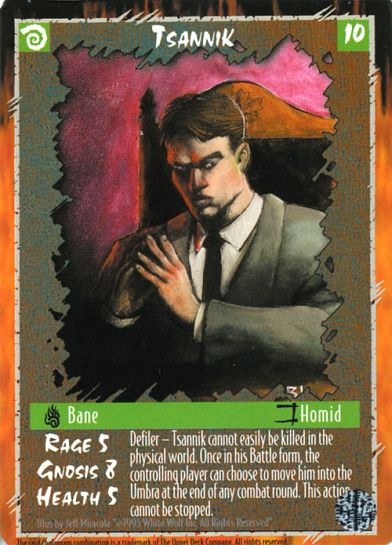
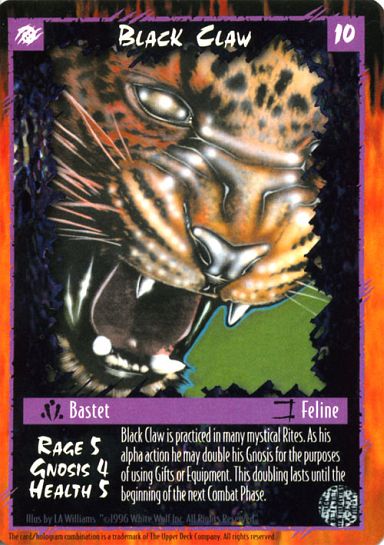
A lot of 10 Renown guys.
So, the highest Renown Alpha would choose a target to attack - either other Alphas, Enemies/Victims, or they can declare a challenge to a non-Alpha pack member, which includes Allies. From there, COMBAT ENSUES!
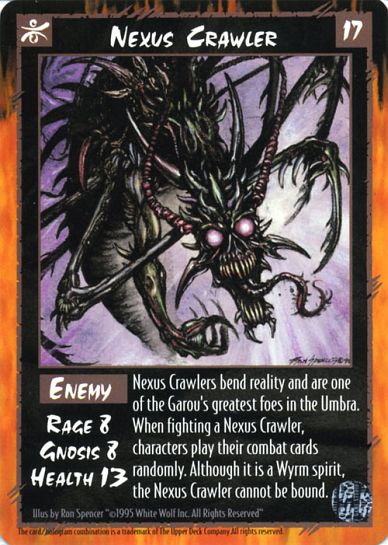
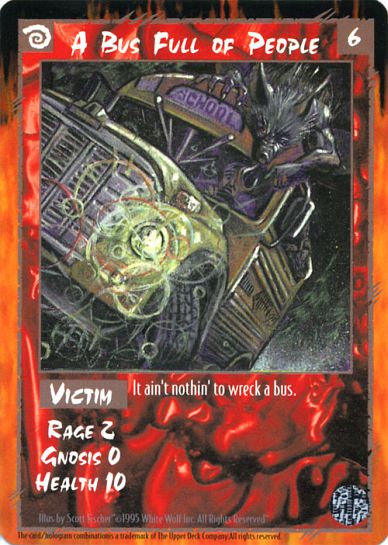
There only purpose is to die.
Each player involved in the Combat chooses a Combat action card from their hand and reveal it simultaneously - we usually did Rock-Paper-Scissors-Shoot! and revealed the cards. You have to reveal at the same time due to a Bluffing mechanic - if you have nothing good to play, you can choose not to reveal the card, which in essence is your guy standing there during a fight. It can be a risky move, but if you know your opponent has a good defensive card ready, it can cause them to completely waste it.
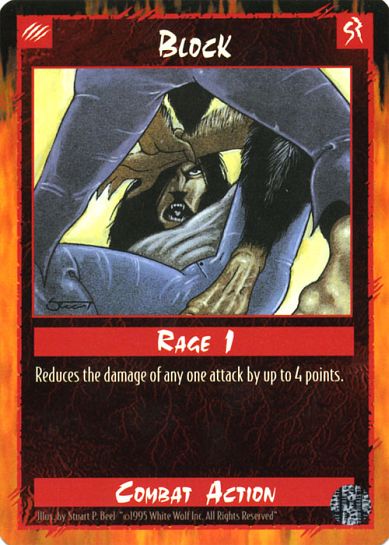
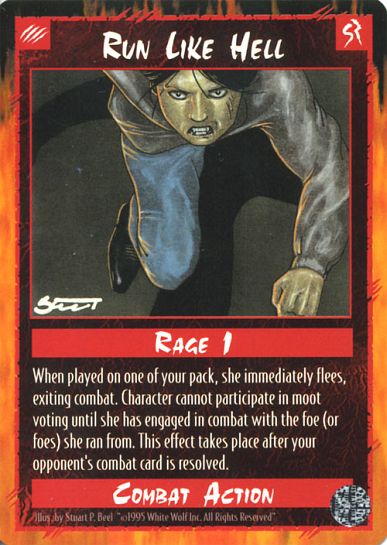
Some defensive Combat Actions.
Now, the choice of which attack/defense to use depends on the Rage stat of the Character and the Rage requirement on the card. It probably goes without saying, but if your Character does not have a high enough Rage score, he/she/it cannot play the card.
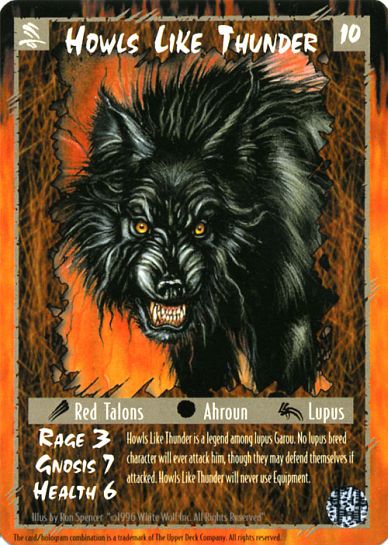
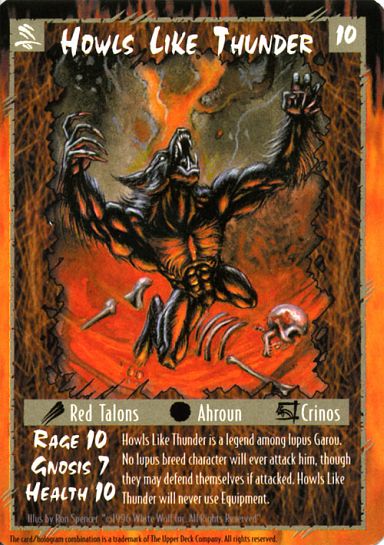
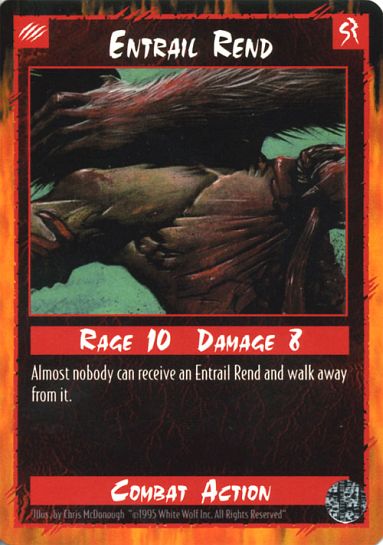
Howls Like Thunder can't play Entrail Rend in his Lupus (wolf) form with only 3 Rage, but he can in Crinos (Werewolf) form!
If both players play a damage inducing action, like Curb Stomp, then both players apply the damage cards to each others combatants. If the Health stat is reached here, or otherwise the damage is equal or higher than the recipients Health, the combatant dies and goes to the winner's Victory Pile. Any defensive actions will either reduce damage or stop it altogether.
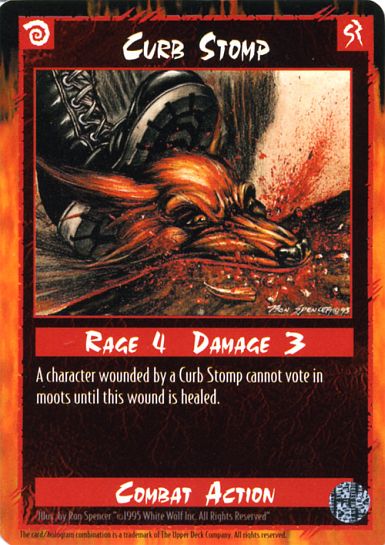
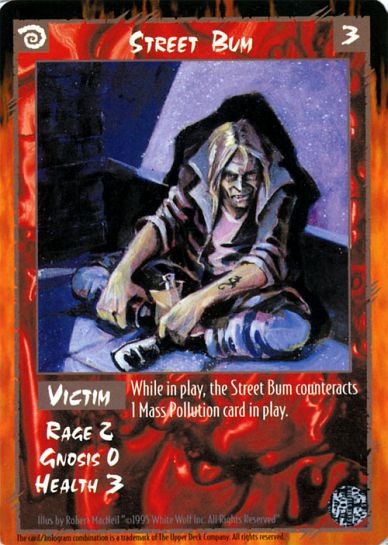
The Curb Stomp's 3 damage is enough to put this Street Bum out of his misery.
Once the fight is over, any player who used a card from their Combat hand would refill to 5 and the next Alpha repeats the process, and once everyone's Alphas have acted, the turn ends and the next turn begins.
Now, I mentioned the Victory Pile, and this is the mechanic for winning the game. Each card in your victory pile is worth their Renown in Victory Points (VP), and as soon as a player has as many VP's as the Renown Level of the game, that player wins.
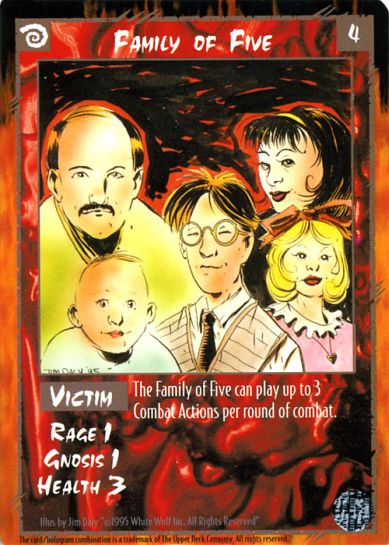
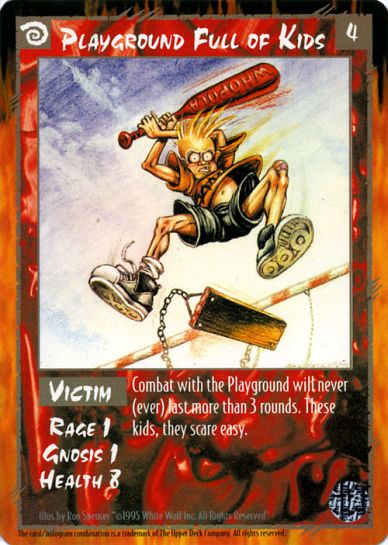
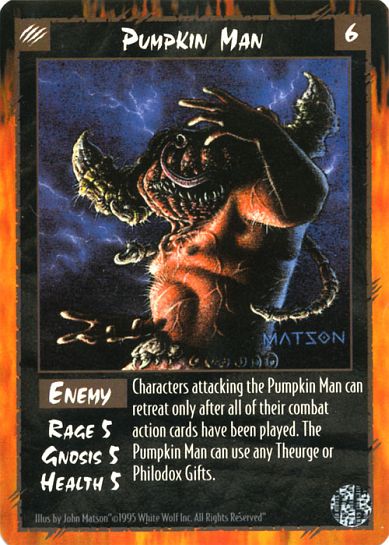
Murdering a Family of Five or a Playground Full of Kids will net you 4 Victory Points, while Pumpkin Man is worth 6.
Really not too much more to the game than that - sure, there are some janky tricks, mechanics, combos and so forth, just like in any game, but the true identity of RAGE is mostly represented in the Combat phase. It was a fast paced game that was as brutal as it was convoluted.
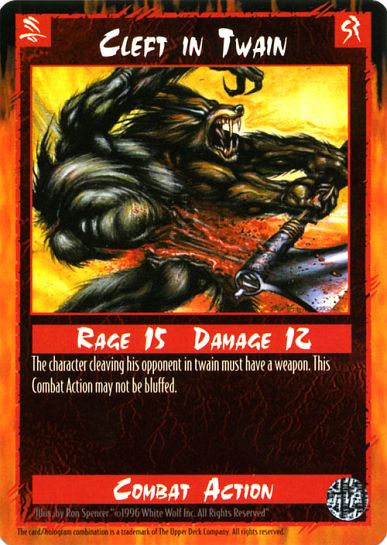
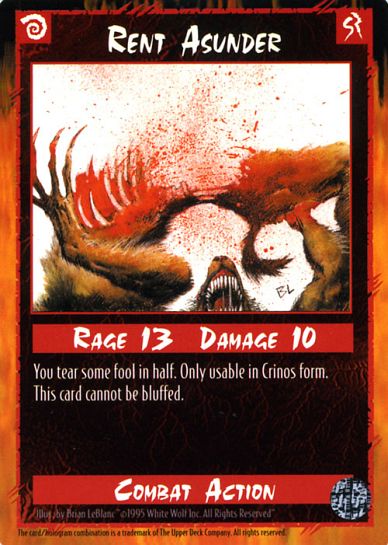
'You tear some fool in half.' Brutality.
Keep in mind, we played this before there was a major internet presence for gaming, and any questions, erratas, etc, were wholly unavailable to us. Any rule inconsistency had to be argued and voted on, which of course caused more bickering.
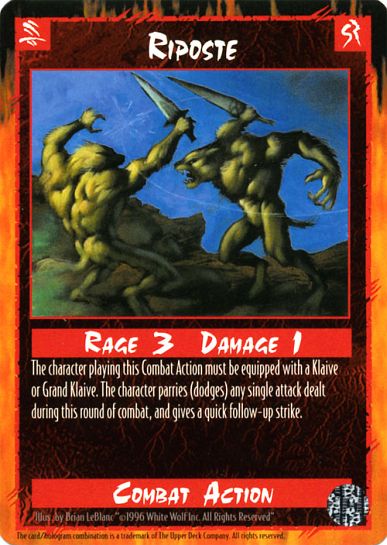
The follow-up strike comment at the end of this card gave us a never-ending argument.
Last thing I want to mention here is the actual quality of the card stock - to this day I have not witnessed more hardy and protected cards. Again, this was before sleeves were widely available, (Black backed opaque sleeves were brand new,) so the durability of the cards was nice - some even survived a basement flood which destroyed all my other CCG's!
Also, to my knowledge RAGE was the first game to include holographic foils. A special, uber strong set of Sept cards called Past Lives were printed, as well as foiled out Characters - both bad guys and good.
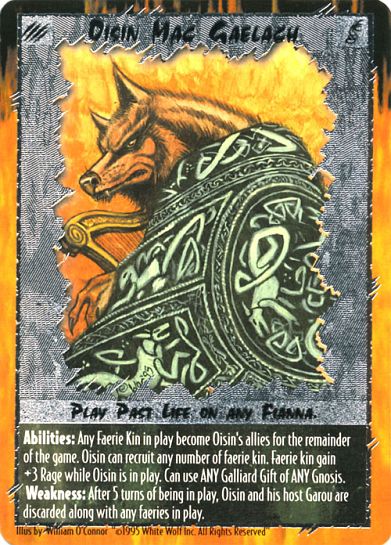
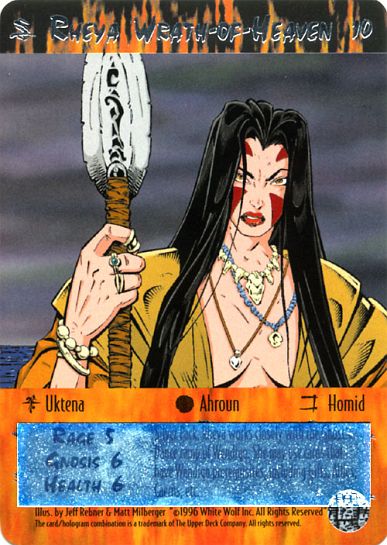
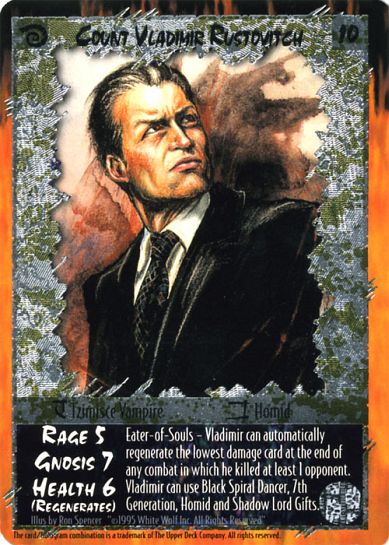
Old school shiney. Bling!
This concludes my first history lesson in Nerd-dom, with many more to come. I think next will be another card game based on violence - WWE Raw Deal - which happens to be my favorite CCG of all time.
For more information on RAGE, check out - http://www.werepenguin.com/rage/rules/. Find all the images I used and plenty more at http://www.werepenguin.com/rage/spoilers/.
Thanks for reading!
Cassidy Silver
Writer of Wrong






